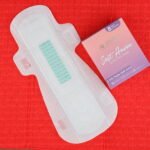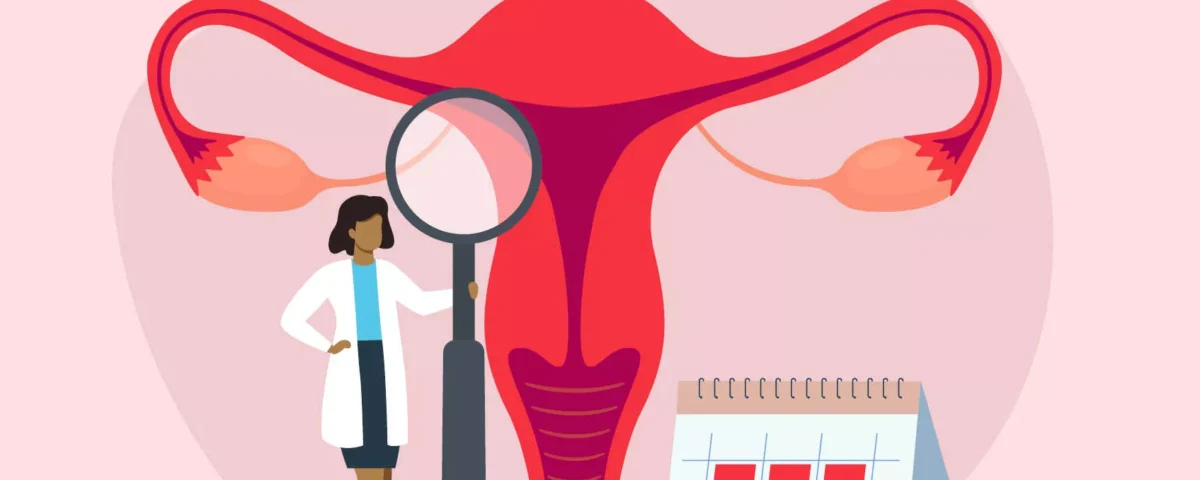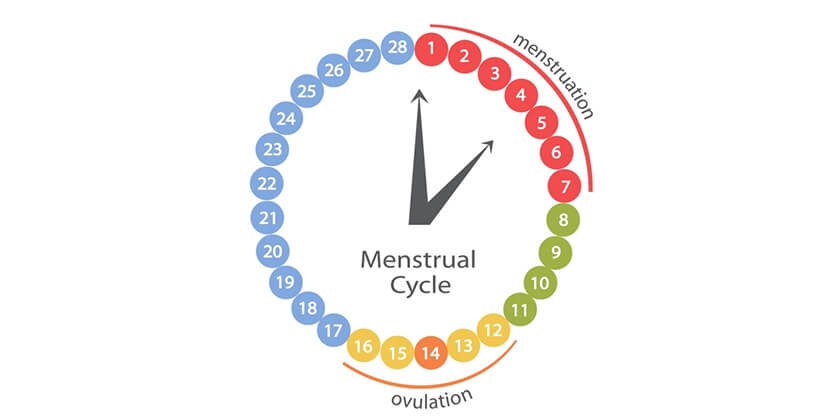How Bath Salts Can Help Relieve Period Cramps
October 14, 2024
Skin-friendly sanitary napkins: 8 reasons to make the switch
October 15, 2024Periods are more than just a few days of discomfort—they are part of a powerful cycle that influences every aspect of your health. For many women, menstruation can feel like a burden, something to "get through" each month. But what if you could transform how you experience your menstrual cycle? Instead of struggling through each phase, you could thrive by following a complete menstrual wellness routine that addresses both your physical and emotional needs.
A holistic approach that combines nutrition, exercise, mental wellness, and self-care can make a significant difference. This guide will walk you through the science-backed steps to build a comprehensive routine that supports your body throughout the entire menstrual cycle, helping you regain control and confidence during your period and beyond.
Understanding your menstrual cycle
The menstrual cycle is often thought of as only the days of bleeding, but it’s a full 28-day cycle that brings hormonal shifts, mood changes, and energy fluctuations. Understanding the four phases of the cycle will help you better plan for wellness:
Menstrual Phase
(days 1-5):
This is the start of your period, when the lining of your uterus sheds. Symptoms typically include cramps, fatigue, and low energy as your body loses blood and begins to reset hormonally.
Follicular Phase
(days 6-14):
After your period ends, your body starts producing estrogen to prepare for ovulation. You may notice a rise in energy, mental clarity, and creativity. This is a great time to focus on productivity and setting goals.
Ovulation Phase
around day 14
Ovulation occurs when your body releases an egg. You’ll feel a peak in fertility, energy, and libido as estrogen and testosterone levels are at their highest.
Luteal Phase
(days 15-28):
Your body prepares for either pregnancy or menstruation as progesterone levels rise. This phase is often marked by PMS symptoms like bloating, mood swings, and irritability. Cravings and lower energy levels are common as the body shifts into a more restorative mode.
Understanding these phases allows you to customize your wellness routine to better meet your physical and emotional needs. Instead of working against your body, you’ll be working with it.
Nutrition for each phase of your cycle
The foods you eat throughout your menstrual cycle can either ease or worsen your symptoms. Science shows that focusing on specific nutrients can help balance hormones, reduce PMS symptoms, and give you more energy.
Menstrual phase
Your body loses iron through menstrual blood, which can cause fatigue and low energy. Eating iron-rich foods like red meat, lentils, and spinach will help replenish your iron levels. Anti-inflammatory foods such as salmon, leafy greens, and ginger can also help manage cramps by reducing inflammation.
Scientific fact: According to research published in the *American Journal of Clinical Nutrition*, many menstruating women are deficient in iron, and dietary intake of iron-rich foods can prevent anemia and fatigue.
Follicular phase
As your energy starts to rise, your body craves protein and fiber to support metabolism and maintain stable blood sugar levels. Foods rich in B vitamins, such as eggs, nuts, and whole grains, are particularly helpful for brain function and mood regulation during this phase.
Ovulation phase
During ovulation, your energy is at its highest, so this is the perfect time to enjoy nutrient-dense foods like avocados, berries, and greens. These foods are high in zinc and folate, which are critical for reproductive health and cell regeneration.
.
Luteal phase
Combat PMS symptoms with foods rich in magnesium, like dark chocolate, almonds, and seeds. Magnesium helps alleviate bloating, cramps, and mood swings by relaxing muscles and improving serotonin production. Complex carbohydrates like sweet potatoes can help balance your mood by boosting serotonin, the "feel-good" hormone.
Tailoring your diet to each phase of your cycle can significantly reduce menstrual discomfort and boost your overall health. Nutrient-dense foods work with your body’s natural hormonal fluctuations to provide balance and relief.
Exercise to support your menstrual cycle
Exercise plays a crucial role in managing menstrual symptoms, from reducing cramps to improving mood. By syncing your workout routine to your menstrual phases, you can maximize your performance while minimizing discomfort.
Menstrual phase
During your period, energy levels tend to be low, and intense exercise may feel draining. This is the time for gentle movement like walking, yoga, or stretching, which can improve circulation and help alleviate cramps.
- Scientific fact: A study published in *Complementary Therapies in Medicine* found that practising yoga regularly significantly reduced period pain and helped regulate menstrual cycles.
Follicular phase
As estrogen rises, your energy returns, making this the ideal phase for strength training and more vigorous activities like HIIT. Exercises that build muscle can boost your metabolism and help regulate your hormones.
Ovulation phase
Your body is at peak performance during ovulation, making it the best time for high-intensity cardio like running, swimming, or a spin class. You’ll feel energized and motivated, so this is a great phase to challenge yourself physically.
Luteal phase
As progesterone rises, energy levels start to dip. During this phase, opt for low-impact workouts like pilates, light weightlifting, or nature walks. This helps manage stress and fatigue without over-exerting yourself.
: Understanding your body’s energy shifts allows you to plan workouts that complement how you’re feeling. By adjusting your fitness routine to match each phase of your cycle, you’ll prevent burnout and support your overall well-being.
Tailoring your diet to each phase of your cycle can significantly reduce menstrual discomfort and boost your overall health. Nutrient-dense foods work with your body’s natural hormonal fluctuations to provide balance and relief.
Managing stress and emotions throughout your cycle
Menstrual phase
With estrogen and progesterone at their lowest, you may feel emotionally drained. This is a time for self-compassion and mindfulness practices like journaling, meditation, or simply giving yourself permission to rest.
Scientific fact: A study published in *Psychoneuroendocrinology* showed that mindfulness meditation can reduce cortisol levels and help regulate stress hormones during the luteal and menstrual phases, easing PMS and improving emotional well-being.
Follicular phase
As estrogen rises, so does your creativity and mental clarity. This is a great time to set goals, plan your month, and take on new challenges.
Ovulation phase
You’re more social and energized during ovulation, so this is a great time to reconnect with friends or tackle group projects. Use this phase to celebrate the heightened confidence and motivation you feel.
Luteal phase
Mood swings and irritability are common in this phase due to the drop in serotonin. Combat these symptoms by prioritizing self-care activities like restorative yoga, baths, and practising gratitude. Supplements like ashwagandha can help lower cortisol levels and reduce stress.
- : By recognizing how your emotions shift during your cycle, you can give yourself the support you need to stay balanced and emotionally resilient.
Prioritizing sleep during your menstrual cycle
Hormonal fluctuations, especially in the luteal phase, can affect your sleep quality, leading to insomnia and increased PMS symptoms. Poor sleep can worsen mood swings and leave you feeling even more drained during your period.
The impact of sleep on menstrual health
Sleep is critical for managing stress and restoring your body’s energy levels. Disrupted sleep can increase inflammation, worsen PMS symptoms, and make it harder to manage your emotions.
- Scientific fact: The National Sleep Foundation reports that women are 2-3 times more likely to experience sleep disturbances before and during their periods due to hormonal changes.
Tips for improving sleep quality
- Consistent bedtime: Keeping a regular sleep schedule helps regulate your internal clock, which is especially important during hormonal fluctuations.
- Magnesium supplements: Magnesium is known to promote muscle relaxation and calm the nervous system, making it easier to fall asleep and stay asleep.
- Avoid caffeine and heavy meals before bed: These can interfere with your sleep, especially in the luteal phase when sleep disturbances are more common.
- Practicing good sleep hygiene during your menstrual cycle can improve your mood, reduce PMS symptoms, and help you feel more energized throughout the month.
Supplements to support menstrual health
While a balanced diet is essential, certain supplements can fill in nutritional gaps and provide targeted support for common menstrual symptoms.
Moringa
Moringa is packed with iron, magnesium, and vitamin A, all of which help alleviate fatigue, support hormone balance, and ease cramps. Studies published in *Phytotherapy Research* highlight Moringa’s ability to reduce oxidative stress and support reproductive health.
Magnesium
Magnesium is crucial for easing cramps, reducing bloating, and calming mood swings. It works by relaxing the muscles, improving sleep, and helping the body manage stress more effectively. Studies, including one published in The Journal of Women’s Health, have shown that magnesium can significantly reduce PMS symptoms, particularly cramps.
Vitamin B6
Vitamin B6 plays a key role in dopamine and serotonin production, which helps balance mood and reduces irritability. It’s especially helpful during the luteal phase when mood swings tend to peak.
Zinc
Zinc supports hormone regulation and can reduce inflammation and period pain. It’s essential for immune function and helps repair tissues, which is especially important during menstruation.
Omega-3 Fatty Acids
Omega-3s are anti-inflammatory fats that help alleviate cramps and improve overall mood stability. Found in fatty fish like salmon or as a supplement, omega-3s can help reduce prostaglandins, which cause menstrual pain.
While food is the foundation, supplements like Moringa, magnesium, B6, zinc, and omega-3s can provide added support to your menstrual wellness routine by reducing pain, balancing mood, and promoting overall well-being.
Tracking Your Cycle for Optimal Wellness
One of the most powerful tools in your menstrual wellness toolkit is cycle tracking. Understanding the patterns of your menstrual cycle helps you predict when you’ll need more rest, nutrition support, or exercise modifications.
Apps and Methods
Apps like Flo, Clue, and MyFLO are excellent resources for tracking your cycle. These apps allow you to record symptoms, monitor your energy levels, and get personalized insights based on your menstrual phases.
How tracking helps?
Tracking your cycle helps you anticipate symptoms like fatigue, cramps, or PMS, allowing you to plan your self-care and adjust your routine accordingly. For example, if you know when your luteal phase is approaching, you can prepare by focusing on foods that support mood and energy or plan restorative workouts during low-energy days.
Scientific Fact: Research published in Reproductive Health found that women who tracked their cycles experienced greater control over menstrual symptoms, leading to improved well-being and a sense of empowerment.
Tracking your cycle gives you the ability to optimize your wellness routine. By understanding how your body changes throughout the month, you can tailor your exercise, nutrition, and self-care to feel your best.
Menstrual products that support your wellness
The type of menstrual products you use directly impacts your comfort, hygiene, and overall wellness. Choosing products that align with your body’s needs can make a significant difference in how you experience your period.
Skin-friendly sanitary pads
Pads made with breathable, chemical-free materials like bamboo cotton are ideal for sensitive skin. These products reduce irritation, rashes, and discomfort, which are common with pads made of synthetic materials. Products like Aurora’s Bamboo Cotton Pads are designed to provide comfort, reduce odor, and maintain pH balance while protecting your skin.
- Scientific fact: A study from the International Journal of Women’s Health highlights the benefits of using breathable and skin-friendly menstrual products, especially for reducing skin irritation and improving overall hygiene.
Menstrual cups
For those seeking a sustainable and long-term option, menstrual cups offer both comfort and environmental benefits. Menstrual cups are cost-effective and help reduce period-related waste while providing longer protection without frequent changes.
Period underwear
Period underwear is a modern solution that provides comfort and security during lighter flow days or as a backup for heavier days. Made with absorbent, breathable fabrics, they eliminate the need for tampons or pads and offer a more sustainable menstrual experience.
- Switching to skin-friendly, eco-conscious menstrual products can improve your period experience, reduce irritation, and support sustainable practices.
Building a self-care ritual around your cycle
Self-care is essential for managing both physical and emotional symptoms during your cycle. By building a cycle-centric self-care ritual, you can transform your period from something you dread into a time of nurturing and rejuvenation.
Menstrual phase
The menstrual phase is the perfect time to slow down and practise deep self-care. Try soaking in a warm Epsom salt bath to relieve cramps and ease muscle tension. Aromatherapy with essential oils like lavender can help calm the mind and relieve anxiety.
Scientific fact: A study published in Complementary Therapies in Medicine found that using lavender essential oil in aromatherapy significantly reduced menstrual cramps and stress levels.
Follicular phase
As your energy rises, this phase is ideal for goal-setting and planning. Journaling, vision boarding, or practising gratitude can help you tap into the creative clarity that this phase brings.
Ovulation phase
Use the heightened energy and confidence of ovulation to connect socially and celebrate your body. Focus on empowering activities like spending time with friends, enjoying hobbies, or practicing active self-care.
Luteal phase
As PMS symptoms set in, restorative self-care becomes crucial. Restorative yoga, gentle stretching, or even mindful breathing can help calm both body and mind. Incorporating magnesium supplements or herbal teas can also support better sleep and mood regulation.
Building a self-care routine that adapts to your menstrual phases helps promote emotional balance, reduce stress, and nurture your body during each stage of the cycle.
Building a complete menstrual wellness routine is about working with your body’s natural rhythms rather than against them. By understanding the phases of your cycle and adjusting your nutrition, exercise, self-care, and products, you can transform how you experience your period. You’ll no longer be surviving your cycle—you’ll be thriving through it.
Your menstrual cycle can be a time for strength, balance, and self-care. When you take an intentional approach to your wellness, each phase becomes an opportunity to nurture your body and mind.




